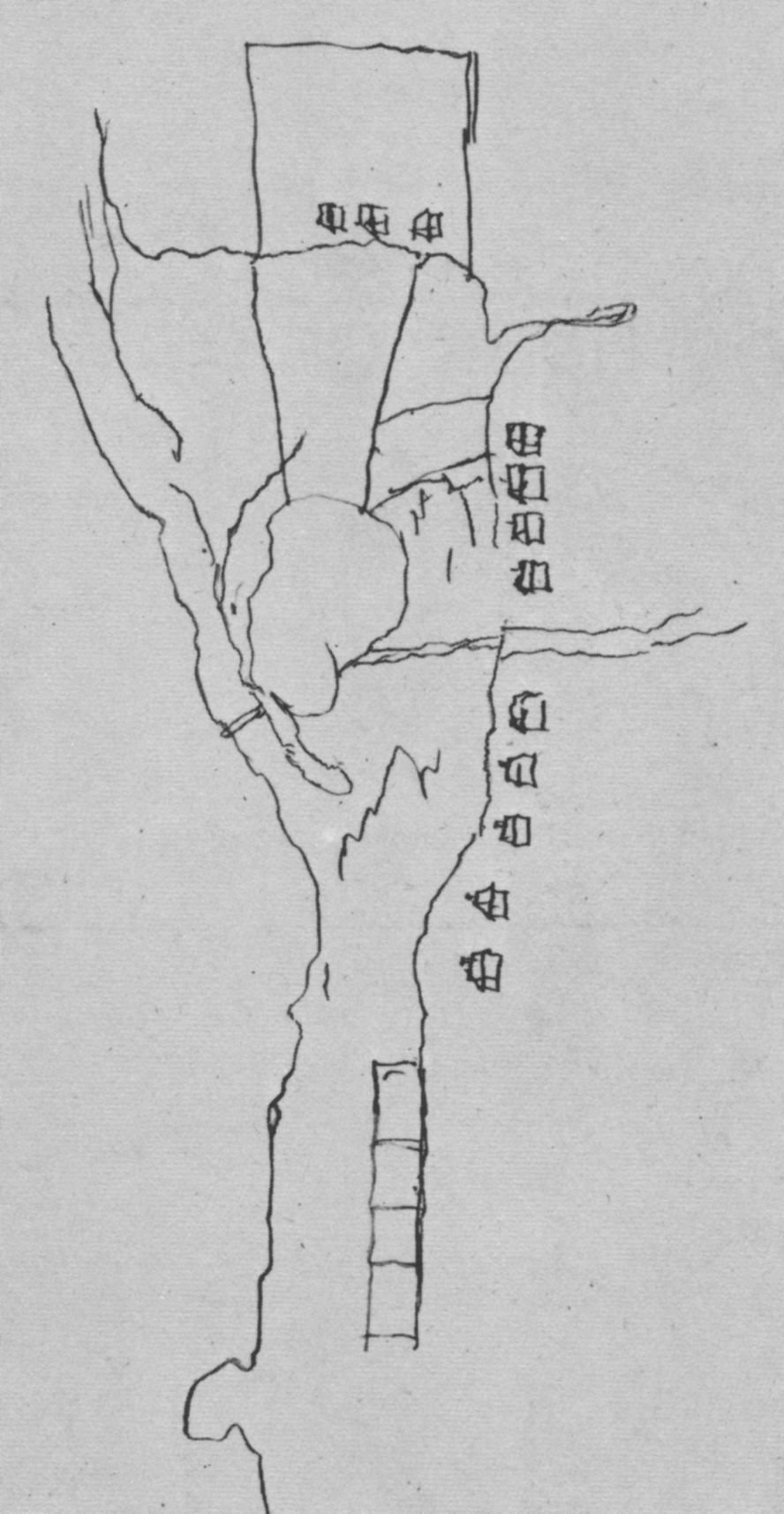Home › Forums › The Colonial Era › Van Cortlandt Park 10/14 walking tour question › Reply To: Van Cortlandt Park 10/14 walking tour question
The 1667 map you are referring to is the “Sketch map of Fordham village” held by the New York State Library. I scanned it  from page 12 of the Reverend William Tieck’s Riverdale Kingsbridge Spuyten Duyvil, which is an essential book for anyone looking to learn about local history. It is available in local libraries as a reference book or you can find a used copy online for sale.
from page 12 of the Reverend William Tieck’s Riverdale Kingsbridge Spuyten Duyvil, which is an essential book for anyone looking to learn about local history. It is available in local libraries as a reference book or you can find a used copy online for sale.
The map is pretty bewildering because it does not really give you any accurately depicted landmarks to get your bearings. According to Reverend Tieck’s caption, “The houses were probably located along modern Bailey Avenue in the vicinity of 229th Street.” That explains the houses on the right that seem to be in a north/south line. The three houses at the top are a different story. They seem to be laid out in a east/west line north of a ridge or a stream.
On page 13 of the Reverend Tieck’s book, there is another map–a 1684 map of the Manor of Fordham. That one shows a cluster of homes that seem to be in the same spot–on a ridge north of Tibbett’s brook. If these are the same buildings as in the 1667 map, that means there was a cluster of homes roughly in the same area as the Van Cortlandt house as early as 1667. An earlier local historian, Thomas Henry Edsall, came to the same conclusion as you can see in his “Historical Sketch Map of Kingsbridge.” Notice three buildings just south of the Van Cortlandt house on his map.
My question is who did those buildings belong to? If they were there in 1667, they would have predated the Tippett and Betts families. Did they belong to Van Der Donck and his workers? That is the same area where the foundations of a small building were discovered during sewer construction in 1910 along with wampum beads, delft tile fragments, and other 17th century artifacts. Tieck thought it was a dead ringer for Van Der Donck’s house but the presence of three buildings clouds the picture in my opinion. How would you know which one was Van Der Doncks own house? However, it does seem very possible that those buildings could represent buildings from Van Der Donck’s estate.